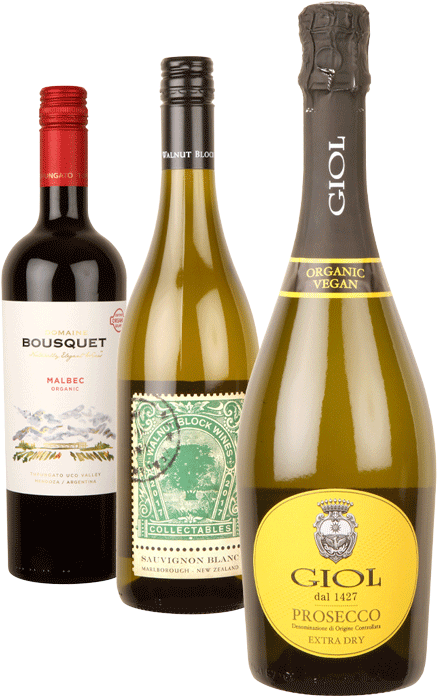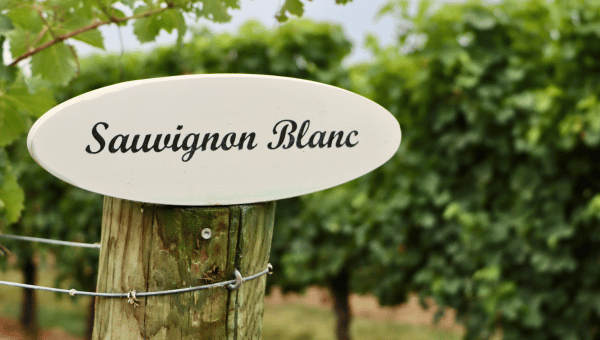Everything You Need To Know About Portuguese Red Wine

When it comes to famous, popular and high quality red wines of southern Europe, Portugal is really beginning to make its mark with a wider and increasingly enamoured audience.
It isn’t difficult to see why: their wines exhibit an incredible depth of flavour, a stunning array of aromatic qualities, and the best examples express a real sense of time and place – making them unmistakably the produce of this ancient and beautiful country.
Made in some of Europe’s most spectacular and unspoilt wine regions, and in much the same way they have been since vines were first cultivated there over 4,000 years ago, the wines of Portugal are more than deserving of your attention.
The new millennium has brought with it a rush of interest in Portugal’s distinctive and traditional fare, and while Port wine sales may be stagnating, still wine sales are quickly increasing. With this renewed vigour in the market, we have seen plenty of fresh, fascinating and forward-thinking Portuguese wineries spring up in recent years, as well as traditional Port estates reinventing themselves to provide modern red and white wines.

So, what better time is there than the present to delve a little deeper into the world of Portuguese red wine? Take a look at our in-depth guide, and start your voyage into a new set of taste sensations.
What Are Portugal’s Most Popular Red Wines?
While some of Portugal’s finest red wines are only recently starting to appeal to an international audience, many of the red wines coming out of this beautiful have been big hitters for centuries. Let’s look at the key red wine styles coming out of Portugal today, and see what it is that makes them so special.
Port Wine
Of course, no article about Portuguese produce would be complete without some mention of Port wine. This gorgeously heady, delightfully aromatic and deeply flavoured fortified wine has been the benchmark by which similar products have been measured for centuries, and continues to be one of the most popular fortified wines worldwide.
Hailing from the Douro Valley, Port wine is sweet and flavourful, and soaked in maritime history.
While Port is typically made from popular indigenous Portuguese grape varieties, including Touriga Nacional, Touriga Franca, Tinto Roriz and Tinta Barroca, it can actually be made from a vast array of grapes – 52, in total!
This results in a drink of remarkable range and variety. Typical flavours include black and red fruits, caramel, vanilla and chocolate, and deep spice notes including cinnamon, nutmeg and pepper.
Douro
The Douro Valley is without question the most popular, most famous, and most highly respected and imitated of all the Portuguese wine regions. Boisterous, full-bodied and with a great balance of fruit and acidity, these wines are very age-worthy; a few years in a cellar brings forward plenty of subtleties and layers of flavour and aroma from the Touriga Nacional, Touriga Franca, and Tinto Roriz grapes used.
Vinho Verde Rosado
We all know and love Vinho Verde as the eponymous ‘green wine’ with the gentle spritz that goes so well with Portuguese seafood. Not quite so many people are familiar with Vinho Verde Rosado (which confusingly translates as ‘pink green wine’), a rosé version of the classic thirst-quencher made from Alvarelhāo, Amaral, Espadeiro and Borraçal grapes.
These are an absolute delight to drink, and resemble a very refined raspberry lemonade; lots of bright, zesty acidity, juicy berry flavours, and a lightness and sharpness which is just irresistible.


Alentejo
Along the Portuguese-Spanish border, we find the Portuguese wine region of Alentejo. Here, the red wines which are produced more closely resemble those of Spain, and make fine use of the Aragones grape… which is better known as Tempranillo. Alentejo produces another full-bodied, age-worthy red wine made from a blend of local varieties, and which typically displays a deep, savoury character packed with spice, tobacco, leather and earthy flavours alongside those of dark fruit.
Alenquer
Alenquer wines hail from the vineyards which rise on the hills around Lisbon, the country’s capital. Although not currently well known internationally, the recent boom in tourism to Lisbon may see this quickly change. Alenquer is tannic, highly concentrated and bursting with character, and is typically made from a blend of grapes including Touriga Nacional, Alfrocheiro, Aragones and Castelao.
Tinto Bairrada
Many wine experts are pointing to the Beira Atlantico Portuguese wine region as the home of the next big thing to come out of this country. It is here we find the highly varied red Tinto Bairrada wines, which are full bodied and highly acidic when young, but which age to produce remarkably elegant, fruity numbers which are a true delight to drink.
A Brief History of Portuguese Wine
As is the case in many of the Old World wine producing countries, the precise origins of Portugal’s wine industry are shrouded in speculation, and lost in the mists of time. Most historians nowadays think that the first Portuguese vines would have been cultivated around 4,000 years ago, by the ancient Tartessian people.
A thousand years later, the Phoenicians moved in, and introduced several grape varietals from their travels around the Mediterranean, and they were followed by the Iberian Celts, and then the Romans. By around 100 A.D, the both Tejo and Douro valley were hotbeds of viticulture, thanks to the regions’ consistent climate, superb drainage, and excellent transport routes.
Vines would have constantly been grown and tended throughout the first and second millennia, and over time, a set of distinct grape varieties would have arisen, and a unique wine style gradually developed.

It wasn’t until the late 18th century, though, that Portugal would really begin to attract the attention of the wider world with its quality vino. The demand for Portuguese red and white wines was booming along with their empire, and the development of both Port wine and Madeira (from the Portuguese offshore territory of the same name) brought massive success and riches to the vintners and merchants of this country.
The history of Portuguese wine was not all plain sailing, however. The phylloxera epidemic (a vine disease), regime changes, economic depressions and mass emigration all caused difficulties which lasted over a hundred years.
The hard times faded as the 20th century progressed, however, and the domestic wine industry found its feet once more. With the turning of the new millennium, an enterprising spirit, a renewed vigour and belief in local produce, and a new generation of movers and shakers saw success follow success.
Today, the Douro Valley (previously home to low quality table wines made from the cast offs from the Port industry) is rightly recognised as one of the finest wine regions on earth, and the whole country continues to consistently impress, amaze and inspire with each development, each new direction, and each delicious bottle. We’re certainly big fans here, and if you aren’t one already, we’re confident you will be soon.
The Most Popular Portuguese Wine Regions
The Douro
The Douro has proven itself to be Portugal’s premier wine region in a relatively short period of time, demonstrating the power that this new generation of vintners has when it comes to changing perceptions of their country. It is a large DOC wine region, split into three sub-regions: the Douro Superior, Cima Corgo (which is generally regarded as the finest of the three), and Baixa Corgo.
Previously, this part of the Portuguese wine country was almost exclusively known for the production of Port. Today, it also exports some of the finest red wines to come out of the country, made from an array of indigenous grape varieties, and grown in the remarkable terroir that has attracted the attention of wine lovers worldwide.

● Size: 42,000 Hectares
● Most Popular Grapes Grown: Bastardo, Mourisco tinto, Tinta Amarela, Tinta Barroca, Touriga Francesca, Touriga Nacional, Tinta Cão, and Tinta Roriz (also known as Tempranillo).
Bairrada
This is a fascinating part of the Portuguese wine regions map. Situated on the Atlantic coast, where the oceanic breezes temper the often considerable heat, Bairrada is dominated by a single grape variety – Baga – which covers 80% of the region. This is Portugal’s smallholder region – indeed, almost 5,000 small wineries are registered for growing there.
Baga is a widely misunderstood grape; in the wrong hands, it can be a highly astringent and challenging wine. However, given the correct handling, and a decent amount of time to mellow, soften and open up, it can produce highly impressive results.
● Size: 108,000 hectares
● Most Popular Grapes Grown: Baga, Tinta Pinheira
Dão
The Dão wine region benefits from a high altitude coupled with granite-rich soils, which result in wines of great balance and with plenty of acidity. The inland location sees long, mild summers, but cold and wet winters, putting its terroir on a similar standing with France’s Burgundy – indeed, the Touriga Nacional grape, from which most of Portugal’s most popular wines are made, has its origins in this part of the country.
As one might expect, the best of Dão’s produce is very good indeed – elegant red wines with a very high level of expression can be found here, and most would agree that the overall standard of this Portuguese wine region has risen considerably over the past decade.
● Size: 20,000 hectares
● Most popular grapes grown: Touriga Nacional, Tinta Roriz, Jaen
Alentejo
The Alentejo is a vast wine region, split into eight DOC subregions, and one which has blazed a bright and exciting trail for the Portuguese wine industry over the past few decades. Modern, forward thinking, and possessing of superb terroir, it’s the thriving hub of 21st century viticulture in this ever-evolving country.
Hot, flat and dry, and mostly covered in agricultural land, Alentejo is a part of Portugal which has proven itself time and time again to be one to watch for great quality red wines, full of fruit-forward character and great expression of terroir.

● Size: One third of Portugal!
● Most Popular Grapes Grown: Abundante, Alfrocheiro Preto, Cabernet Sauvignon, Chardonnay, Diagalves, Fernão Pires, Palomino, Periquita, Rabo de Ovelha, Tempranillo, and Trincadeira.
Portuguese Red Wine and Food Pairing
With their robust, full-bodied and deeply flavourful character, it comes as no surprise that Portuguese red wine pairs beautifully with a wide range of foods. Rustic, earthy, meaty dishes are the order of the day here: big, hearty meat stews, roasts and game, food to fill the belly and feed the soul!
● Portuguese Rabbit Hunter Style
With its beautiful, gamey meats, tomato and herb based sauce, and the inclusion of slow cooked mushroom, this recipe is ideal for pairing with a robust red wine from the Douro valley.
Both the wine and the dish are packed with big, bold flavours capable of standing up to one another, and will come together to provide a truly rustic taste sensation that won’t easily be forgotten.
● Grilled Sardines with Garlic, Lemon and Paprika
Portugal is home to some of the finest seafood on earth, and nothing is more Portuguese than a big dish of grilled sardines to munch on alongside a hunk of homemade bread. This dish would go perfectly with a cool glass of Rosado Vinho Verde, with the bright, lemony flavours of the wine bringing out the freshness and zestiness of the dish.

Port is most commonly paired with cheese, but most experts agree that it is perhaps better paired with a dessert which brings out the sumptuous fruitiness and sweetness of this amazing fortified wine. The sour cherries in this pie will allow the wonderful depth of sweetness of the wine to shine, and will also bring forward all that spice and complexity, too.
Our Recommendations for Portuguese Red Wine
DOC Douro Moinho do Gato
A thoroughly modern Douro wine, displaying many of the unique features which have made this region so popular and admired in recent years. Made from a careful blend of Tinta Barroca, Touriga Francesa and Touriga Nacional grapes, this is an unoaked wine with a powerfully fruity set of flavours, and plenty of fascinating and expressive characteristics.
DOC Douro Quinta do Romeu Colheita
This wine is made from a blend based around the Touriga Nacional grape and encapsulates that robustness and depth which this wine region is famed for. With finesse, great length and a range of red fruit flavours, it’s a fantastic example of a modern Douro wine.
Fonseca Terra Prima Organic Reserve Port
This organically produced Port wine from Portugal’s Douro Valley is beautifully smooth, and bursting with intense flavours of blueberry, plum and cherry.
We’re delighted to see Portuguese red wines doing so well – this is a fascinating and ancient wine producing country, with so much variation and fantastic produce to share with the world.
From the classic Port wines to the wonderful, full-bodied red table wines the country is becoming increasingly famed for, Portuguese wine is well and truly on a roll, and we can’t recommend it highly enough. For more information, and a great range of hand-picked bottles, check out of organic Portuguese wines today.









